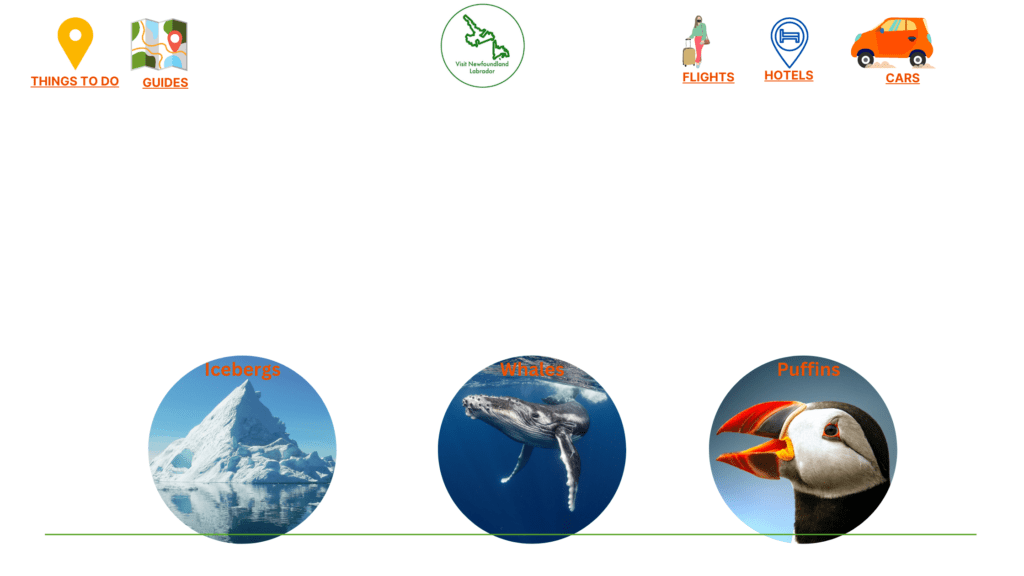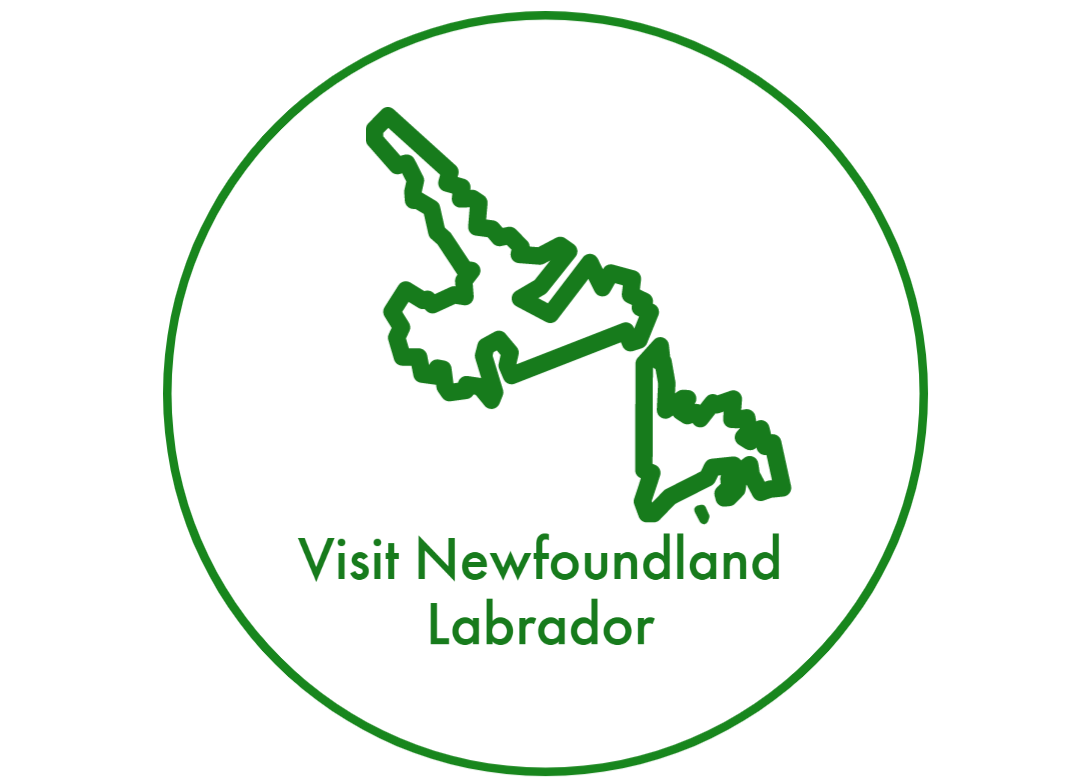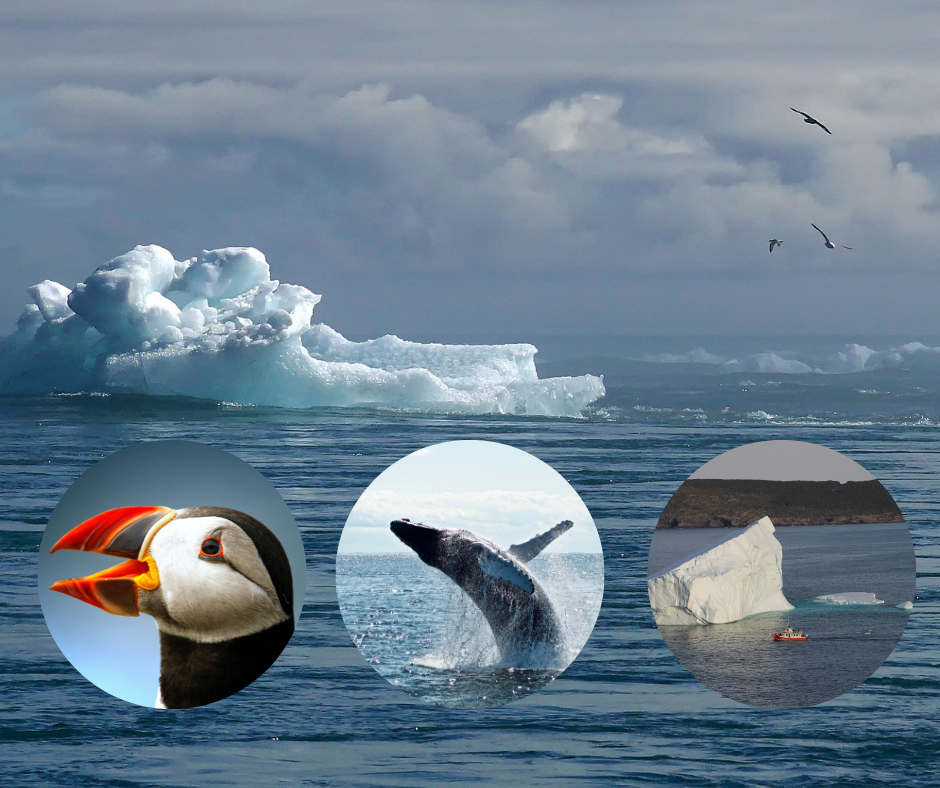Where Big icebergs off the coast of Newfoundland come from
This is where big icebergs off the coast of Newfoundland come from. The glaciers in Greenland that have calved or broken off and fallen into the ocean are the primary source of the icebergs off Newfoundland and Labrador. The Greenland ice sheet, which is the second-largest ice sheet in the world after Antarctica, includes these glaciers.
When glacier fragments separate and are later pulled by ocean currents along the Labrador and Newfoundland coasts, they form icebergs. If you’re interested in Whale watching, the best time to visit is from mid-June to early August, when humpback whales are most active. Plan ahead by booking tickets several months out. Book your ticket here.
Before reaching the waters around Newfoundland and Labrador, the icebergs might travel hundreds or even thousands of kilometres from their point of birth in Greenland.
Many variables, including the water’s temperature, the ice’s age, and the quantity of air bubbles trapped, affect the icebergs’ size, form, and colour.
Getting Around Newfoundland and Labrador
Booking a Rental car is the easiest way to get around Newfoundland and Labrador. The province is vast and remote, and public transportation can be limited. A car rental lets you explore at your own pace and visit off-the-beaten-path destinations.

It takes icebergs many years to melt after it leaves Greenland fully. It’s not rare for icebergs to wash up on shore in Newfoundland and Labrador because it does happen every season. When this happens, locals will often go out on boats to see them up close. Icebergs are beautiful but can also be dangerous if you’re not careful.
Most of the icebergs that float into Newfoundland and Labrador come from Greenland. They’re formed by glaciers, which are large masses of ice that flow slowly over land or water. Icebergs are made up of fresh water and can be as large as 100 square kilometres.
More Newfoundland and Labrador Travel Guides
- Best Towns In Newfoundland For A Relaxing Weekend Getaway
- The best things to do in Twillingate
- Colourful Northern Lights In Newfoundland And Labrador Sky
- The Best Trip Ideas for Newfoundland
Icebergs aren’t a new phenomenon. Icebergs have been around for millions of years, and contrary to popular belief, they don’t melt as quickly as you might think. Massive blocks of Icebergs can take up to 1 to 2 years to disappear completely underwater after it has broken off from their glacier source landmass. As the ice breaks off from the glacier, it forms an iceberg. Icebergs will continue to drift with ocean currents until they melt, break up into smaller pieces or come ashore in Newfoundland and Labrador.
Icebergs can be dangerous. They are enormous and heavy, so they can cause damage to your property if they hit it. Icebergs are also cold, which means they will give you frostbite if you touch them for too long Icebergs are slippery, so you need to be careful when walking on them or climbing up their sides.
If an iceberg cracks under your weight and breaks apart into pieces while you’re standing on top of it, those pieces could fall into the water below, where they would be difficult to see until after they’ve already hit someone. So the best way to avoid an accident with an iceberg is by knowing what to look for in the water around Newfoundland and Labrador’s coasts.
Icebergs along Newfoundland and Labrador’s coasts are usually white and blue, and they can range from about the size of a small boat to as big as a two-story house. You’ll also want to watch out for large chunks of ice that have broken off from an iceberg. These will look like floating pieces of regular ice but are much bigger and more dangerous. Some icebergs have snow on top of them, while others are bare and smooth. If you’re in a boat, look for signs of movement around an iceberg. If you see that it is moving back and forth with the current or waves, then it’s probably not attached to anything and could break apart at any time.
Where to see icebergs in Newfoundland and Labrador?
Newfoundland and Labrador are full of surprises, and one of the biggest is the massive iceberg that drifts into view each year. While you’re sure to see a few off the coast of Newfoundland, some make their way through iceberg alley and other get grounded in the bays and inlet on the coast. The best place to see icebergs is around Twillingate, Fogo Island, Bay Bulls, Trinity, and Bonavista, where you can watch them drift by and even touch them. If you want to get out on a boat tour, plenty of operators in town will help you find an iceberg.
When is iceberg season in Newfoundland?
In Newfoundland, the iceberg season usually lasts from late May through early June into August. The timing can change, though, based on the climate and ocean currents. Therefore, the best time to see icebergs is in late May and early June. After that, they reach their peak in mid-June and then start to decline in July and August. It’s a good idea to check with regional tourism offices or visit icebergfinder.com for the most recent information on sightings and locations if you intend to travel to Newfoundland during the iceberg season.
When is the best time to visit Iceberg in Newfoundland?
Visitors to Newfoundland usually have the best chance of seeing icebergs between late May and early June and August. The weather is also often better for outdoor activities at this time of year because the icebergs are most plentiful and visible. Mid-June is normally when you can see icebergs along the shore, making it the best time to see them. However, iceberg sightings can be unpredictable and change yearly, depending on the weather and ocean conditions, so it’s crucial to keep this in mind. It’s a good idea to check with regional tourism offices or visit icebergfinder.com for the most recent information on sightings and locations to enhance your chances of seeing icebergs.
These are the best travel planning resources you should use.
Looking to book your trip to Newfoundland and Labrador? Use these resources that are tried and tested by other travellers like you who vacation in Newfoundland and Labrador. Bookmark these links. Save them for future reference.
Booking Flights, Hotels or B&B: Start planning your next vacation trip by finding the best flight, hotel or b&b deals. Book Here
Finding things to do in Newfoundland and Labrador on TripAdvisor and Viator is not hard. Enjoy boat tours, whale watching, icebergs watching, kayaking and other activities.
You can also find low prices on hotels, B&B and cabins with these two providers. If you are located in Canada, the USA, the UK or Europe, use Booking.com, and if you are in Canada, the USA or anywhere else, use TripAdvisor.
Car Rental: Here is what we recommend:
When you book with Rentalcars.com, you can compare prices and find the best vehicle for your trip. Economybookings.com Display all their vehicle on the website with a detailed description. They display high-quality photos and a user rating as well. Qeeq.com serves road trip travellers like you from different countries by working with car rental companies worldwide.
Get compensated if your flight is delayed or cancel
AirHelp and Compensateair will help you with flight delays, cancellations, or denied boarding. All you need to do is to submit your flight details, and they will handle the claim process on your behalf. They will handle all the paperwork, airline negotiations, and legal proceedings.
Do you need more help planning your trip?
Check out our Resources Page, where we highlight all the resources and companies you can use to assist with your planning.



